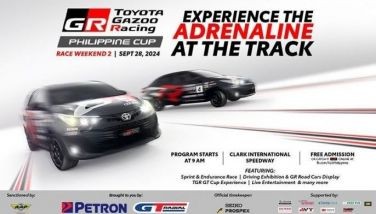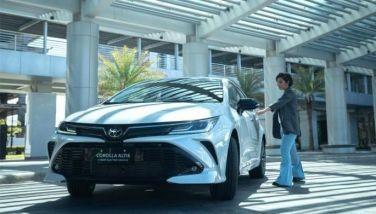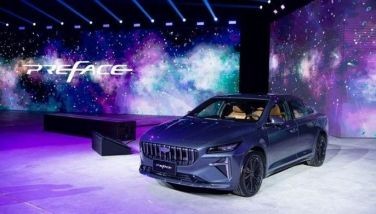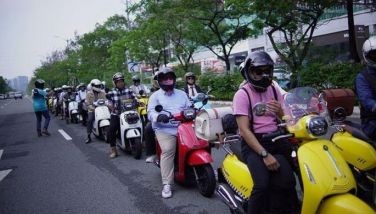We're All Corrupt
Thank God President Noynoy said it: no to wang-wang. For some, the president’s apparent irritation towards VIPs (or those who pretend to be) seems trivial, but PNoy is actually on to something here. Some people counter that PNoy should first tackle more pressing issues like the economy or poverty, but the prevalent unauthorized use of sirens, blinkers, and other such devices is a mirror to what’s fundamentally wrong with our culture: corruption. It’s something we’re all guilty of and something that needs to be fixed real soon.
In the broadest sense, corruption is anything that causes inefficiency in a given system. So if you think paying off kotong to the yellow-colored crocodiles or the blue-hued alligators is the only way you contribute to corruption, think again. Each and every time you counter-flow, run a red light, or park in a no-parking zone, it’s contributing to corruption – in this case, inefficiency in Manila traffic. Anyone who’s driven on our roads and cursed loudly knows how each stupid action can potentially create a logjam. And when I mean “stupid”, I mean anything that goes against our traffic regulations or even against plain logic. For instance, turning without signaling can catch the driver behind you off-guard causing a fender bender. The same goes for those who don’t give way at intersections creating a phenomenon called a “gridlock”.
I can certainly go on and on about the different traffic infractions we’ve come to see everyday, but the fact is, it’s going to get worse – a lot worse. Some attribute the lack of infrastructure as the root cause, but it goes beyond that. Number-crunchers at IBM Research’s recent “Commuter Pain Index” have determined that simply making more roads aren’t enough to overcome the growth of traffic. In their study, unsnarling the traffic jam in Moscow (third on its “Commuter Pain Index” list) will cost the government US$ 6.50-billion and that doesn’t even guarantee success in solving the problem. But Moscow is nothing compared to Beijing, the worst city on the list. There, 7 out of 10 motorists have simply cried, “uncle” and gone home rather than spend hours sucking exhaust fumes.
In the build up to the 2008 Olympic Games, the Chinese government has tried every conceivable traffic countermeasure it could think of – from banning trucks on the road at certain times and disallowing cars on certain days based on their plate numbers. Sounds familiar? It didn’t work that well that for the ongoing World Expo in Shanghai, the Chinese government simply called off work for five days to reduce commuter headaches. That kind of solution certainly works for an autocratic government, but it certainly won’t work for us. Instead, IBM researchers offer a more interesting and perhaps, lasting solution: use technology to proactively empower both traffic enforcers and motorists. And then, let’s go a step further by using this same technology in order to properly enforce traffic rules and regulations.
Putting up or should I say, reviving the anti wang-wang hotline is a start, but even maligned technology such as the RFID could be used to properly control our traffic. However, instead of using these smart chips to spy on private citizens, why not go a step further and install GPS on public utility, emergency response and government vehicles? That way, it removes the guess work from how many empty buses are racing on EDSA or which vehicles marked for “official government use only” are used for weekend shopping trips to Greenhills. Surely some transport groups will find this an expensive exercise; so why not tack it on the franchise fee? It easily weeds out colorum, out-of-line or unwanted public vehicle franchises in a single shot. After all, if you can’t pay for a GPS system, how can you pay for the proper upkeep of your jeep or bus or pay monetary damages or hospitalization to passengers caused by reckless drivers?
Additionally, install high-definition traffic cameras all over the metropolis. The MMDA was on the right track by putting up several of them on major thoroughfares, but these were put in to monitor floods. So what about motorists who run red lights and speed recklessly? We’ve seen how cameras can be beautifully executed on both the NLEX and SLEX where traffic aids can easily aid motorists in distress and catch dangerous speedsters at the same time. This very technology can also remove the direct interaction between unscrupulous cops and erring motorists, which are the biggest temptation for bribes. After all, you can’t dispute a black and white photo of your car and plate number on it. And it works and passes judgment consistently on a 24/7 basis (unless there’s a blackout, but that’s another story). Furthermore, it removes the need to put a bunch of cops at every intersection whose only job is to catch people who turned right on a “no right on red” infringement.
And on the subject of “no right on red”, PNoy should also modernize and consolidate our different and sometimes diverse (not to mention funny) traffic rules and regulations. Anyone who goes through Pasay, Makati all the way through Pasig and Marikina everyday will know how each area has their own rule and policy, some of which directly negates another city’s. Even the once simple number coding scheme is implemented differently depending on the area and memorizing when it’s in effect and when it’s not can cause confusing especially to out-of-towners.
PNoy’s promise of change and government transparency seemed lofty during the elections, but now that he’s vowed not to use sirens and stop for every traffic light, he’s proving that he’s every bit as simple and dignified as promised. Moreover, he should get a first-hand experience on how atrocious our rush hour can be and hopefully he can be better equipped to do something about it. If there’s one thing PNoy has learned from his parents, it’s how change can begin with one single act of defiance. If only we can follow his example and be courageous enough to go against the corruption on the road, then perhaps Metro Manila’s traffic problems can be solved after all.
Here’s a Backseat Driver comment on Kap Aguila’s “What the heck should we do with the yellow lane?”…
Before I commit any hope to Metro Manila’s traffic situation, I think a survey and random test among ALL traffic enforcers should be done. All should be given a test with one question only: What is the difference between swerving and changing lanes. I bet everybody will be surprised with the answers, if there be any… – deguje
And one on James Deakin’s “SLTC announces toll increase amidst protests”…
It’s too much and the quality of the road is not good… too wavy and still lacks lighting. We should only pay for the finished product. – brondial
- Latest





























